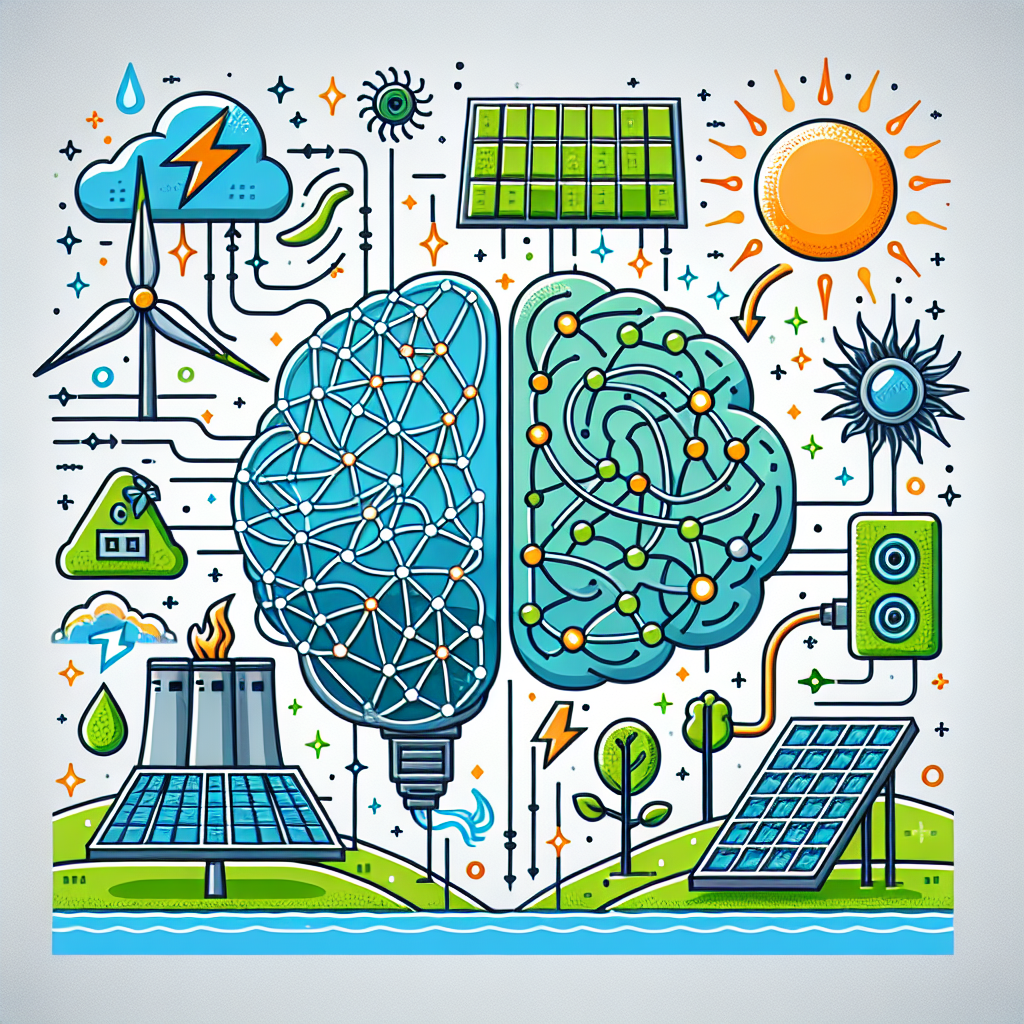The Impact of AI on Renewable Energy Distribution
Artificial intelligence (AI) has become a powerful tool in various industries, and one area where it is making a significant impact is in renewable energy distribution. AI technologies are being used to optimize energy production, storage, and distribution, leading to more efficient and sustainable energy systems. In this article, we will explore the ways in which AI is transforming renewable energy distribution and the benefits it brings to the industry.
1. Optimizing Energy Production
One of the key ways in which AI is transforming renewable energy distribution is by optimizing energy production. AI algorithms can analyze data from various sources, such as weather forecasts, energy demand patterns, and equipment performance, to determine the most efficient way to generate energy from renewable sources like solar and wind. By dynamically adjusting energy production based on real-time data, AI can maximize the output of renewable energy systems and reduce the reliance on traditional fossil fuels.
For example, AI can predict the amount of sunlight or wind that will be available in a given location at a specific time and adjust the operations of solar panels or wind turbines accordingly. This ensures that energy production is optimized to meet demand while minimizing waste. Additionally, AI can identify potential issues with renewable energy systems in real-time, allowing operators to address problems before they impact production.
2. Improving Energy Storage
Another way in which AI is transforming renewable energy distribution is by improving energy storage systems. Energy storage is essential for balancing the supply and demand of renewable energy, as these sources are intermittent and can fluctuate based on weather conditions. AI technologies are being used to optimize the operation of energy storage systems, such as batteries and pumped hydro storage, to store excess energy when production is high and release it when demand is high.
AI algorithms can analyze historical data, weather forecasts, and energy demand patterns to predict when energy storage will be needed and how much energy should be stored. This predictive capability allows energy storage systems to operate more efficiently and reduce costs. Additionally, AI can optimize the charging and discharging cycles of batteries to extend their lifespan and improve their overall performance.
3. Enhancing Energy Distribution
AI is also transforming the distribution of renewable energy by optimizing the grid infrastructure and improving the reliability of energy delivery. AI technologies can analyze data from sensors, smart meters, and other devices to monitor the performance of the grid in real-time and identify areas where improvements can be made. By detecting issues such as voltage fluctuations, overloads, and equipment failures, AI can help prevent power outages and ensure a more reliable energy supply.
Furthermore, AI can optimize the routing of energy through the grid to minimize losses and reduce costs. By dynamically adjusting the flow of electricity based on demand and network conditions, AI can improve the efficiency of energy distribution and reduce the need for costly infrastructure upgrades. This leads to a more resilient and sustainable energy grid that can better accommodate the increasing penetration of renewable energy sources.
4. Benefits of AI in Renewable Energy Distribution
The integration of AI technologies into renewable energy distribution offers several benefits to the industry:
– Increased Efficiency: AI can optimize energy production, storage, and distribution to maximize the use of renewable energy sources and minimize waste.
– Cost Savings: AI can reduce operational costs by optimizing the performance of renewable energy systems and grid infrastructure.
– Improved Reliability: AI can enhance the reliability of energy delivery by detecting and addressing issues in real-time.
– Environmental Benefits: By increasing the use of renewable energy sources, AI can help reduce greenhouse gas emissions and combat climate change.
FAQs
Q: How does AI optimize energy production from renewable sources?
A: AI algorithms analyze data from various sources, such as weather forecasts and energy demand patterns, to determine the most efficient way to generate energy from sources like solar and wind. By adjusting energy production based on real-time data, AI can maximize output and reduce reliance on fossil fuels.
Q: How does AI improve energy storage systems?
A: AI technologies optimize the operation of energy storage systems, such as batteries and pumped hydro storage, by analyzing historical data and predicting when energy storage will be needed. This predictive capability allows energy storage systems to operate more efficiently and reduce costs.
Q: How does AI enhance energy distribution?
A: AI optimizes the grid infrastructure by analyzing data from sensors and devices to monitor performance in real-time. By detecting issues and optimizing energy routing, AI improves the efficiency and reliability of energy distribution.
In conclusion, AI is revolutionizing renewable energy distribution by optimizing energy production, storage, and distribution. By harnessing the power of AI technologies, the renewable energy industry can increase efficiency, reduce costs, improve reliability, and make a significant impact on combating climate change. As AI continues to evolve, its role in renewable energy distribution will only become more crucial in creating a sustainable energy future.

